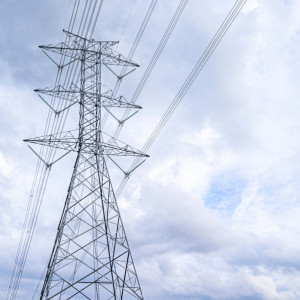Rs19.44 billion was spent on buying electricity from India while exports stood at Rs10.10 billion in 2022-23.

Nepal continues to spend more in buying electricity from India than earning through its export, even as the country aims to become a net exporter.
As domestic production declines sharply in the dry season requiring power supply from the southern neighbour, the Nepal Electricity Authority (NEA) has been forced to spend big on buying power.
According to the NEA, it spent as much Rs19.44 billion to buy power from India while its export to the southern neighbour stood at Rs10.10 billion in the last fiscal year 2022-23, suggesting the country still has a long way to go to be self-reliant in clean energy.
Nepal exported power equivalent to 1,333 gigawatt hours in the last fiscal while it imported 1,833 gigawatt hours.
Prolonged drought in the last fiscal year badly affected domestic power generation and the country had to import more, said Kul Man Ghising, managing director of the NEA. “As a result, Nepal continues to become a net importer.”
Stating that the country faced an unprecedented fall in power generation, the NEA decided to procure power through bids from Indian generators and traders with the hope that competition would significantly lower the purchase price of electricity.
“However, since the lowest bid prices exceeded the average price trends in India’s day-ahead power exchange market, the NEA was bound to annul the bidding process and cling to a bilateral agreement with the Indian power traders for the months of March, April and May,” the power utility said in its Annual Report 2022-23.
Since fiscal year 2019-20, Nepal’s power import has been on a downward trend amid increasing domestic power generation in the period.
Ghising said that he believes power imports will continue to decline even though the country had to import more due to prolonged drought. “Still, net import decreased even in the last fiscal year, even though total imports increased,” he said.
The NEA aims to be self-reliant on electricty by 2026. Ghising said it was possible to meet this target considering the planned generation of the electricity in the country.
By the end of the current fiscal year 2022-23, Nepal’s power generation capacity is expected to reach 2,853MW, 4,507 MW by mid-July 2024 and 5,251MW in mid-July 2025, according to the power utility. But domestic consumption is expected to be half the potential generation by 2025, forcing Nepal to sell electricity abroad, it said.
“If all the planned projects are completed by 2026, Nepal has every chance of becoming self-reliant on electricity,” said Sher Singh Bhat, former deputy managing director of the NEA. “Provided Nepal achieves generation capacity of around 5,500MW, there can be base load demand for around 2,000MW in the dry season which Nepal can meet with its own generation.”
According to him, the country can also fulfil the peak power demands, of around 3,000MW, through peaking power projects.
But the bigger worry is whether the country can increase its power export given the transmission constraints and uncertainty about India consistently buying Nepal’s electricity.
When Prime Minister Pushpa Kamal Dahal visited India in May and June, New Delhi had announced that it would buy 10,000MW in the next 10 years. But the southern neighbour is yet to grant Nepal additional export permission after earlier approving 452.6MW.
“There is a question of whether India will be a reliable trading partner of electricity as it has come to treat power as a strategic product,” Bhat said. “It is thus important to sustainably increase domestic demands as we will continue to rely on ourselves for the consumption of electricity we produce.”












